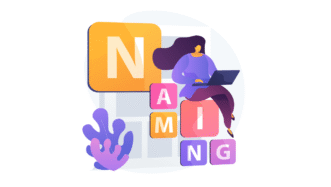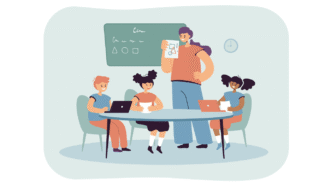LESSON OVERVIEW
The main objectives of this ESL lesson are to:
- discuss and share opinions on quirky behaviour and habits;
- practise vocabulary to describe behaviour;
- watch a video where celebrities discuss their quirky behaviour in different situations.
With this lesson, students explore the meanings of “weird” and “quirky”, talk about behaviour and watch a video of celebrities sharing their habits and rituals. They work on vocabulary to talk about behaviour (e.g. fidget, abrupt, obsessed, etc.), discuss famous characters’ quirkiness and describe behaviours and their associated actions. Students also think about possible reasons for different behaviours.
C2 / Proficiency60 minStandard LessonUnlimited Plan
WARM-UP AND VIDEO
This lesson starts with a warm-up. Students read sentences about weird and quirky behaviours. They discuss how the choice of words makes the description of the behaviours different. Then, students brainstorm other examples of behaviours that could be “weird” or “quirky”. Afterwards, they watch a video in which celebrities talk about habits and rituals they have. Students make notes on the celebrities’ behaviours in some situations (e.g. when they fly). Following that, they discuss questions about weird and quirky habits. Next, students read about behaviours. They then practise vocabulary to describe behaviour (e.g. rub the skin on – scratch). After that, students discuss behaviours (e.g. clucking, cracking, doodling, etc.), using some points to react to and reflect on them.
VOCABULARY AND DISCUSSION
At this point in the lesson, students rewrite sentences about different behaviours by changing words to other parts of speech (e.g. Someone makes an abrupt change to the plan. (adverb) – Someone abruptly changes the plan.). Afterwards, students read the sentences again and come up with reasons for the behaviours described. They say if they or the people they know do those things. Then, students choose characters (e.g. Donkey from Shrek), or think of their own. They explain what makes their behaviour quirky and say whether the quirks make the characters likeable or not. Students use vocabulary to describe behaviour (e.g. abrupt, random, cluck, etc.).
HOMEWORK/REVISION
This lesson plan also includes an additional task that you can use as homework or revision. In the task, students find the misplaced verbs and put them in the right form in the correct sentences. Then, they choose one word from the lesson to write a follow-up sentence describing the quirky behaviour. The task is available in the teacher’s version of the worksheet. You can print it and hand it out to your students. It’s also included in the e-lesson plan
WORKSHEETS
Subscribe to unlock these and many other Standalone lesson lesson plans with the Unlimited plan
Subscribe













Very positive and lighthearted lesson. Some good useful vocabulary too!
Thanks for your comment, Ewa! Glad to hear you like the lesson!
Wonderful lesson—I very much enjoyed teaching this one.
Thank you so much! We’re really happy to hear such positive feedback. 😊
This is a fantastic lesson. Thank you very much!
Great to hear that! Thank you, Andrew!
My students love this lesson! They find Dua Lipa’s rituals and superstitions very amusing!
Hi Nathan! We’re so glad to hear that your students had fun with this lesson!
Totally agree!
Very well designed lesson. I’m going to use it with my teenage student. Pretty sure she’s gonna love it
Thanks! We hope it was engaging 🙂
good lesson but takes like 40 minutes
Thanks for the feedback! The lesson includes eight tasks, plus extra task ideas in the form of teacher’s notes, all designed to fit within a 60-minute session. However, depending on your needs and other factors such as student engagement and group dynamics, the time spent on each speaking task might vary, allowing you to shorten or expand the lesson as needed.
I love this lesson!!! It’s great and so engaging! My students really enjoyed it. Thanks for sharing!!
That’s so great to hear! Thank you for taking the time to comment!
Love it! It’s fun, full of unusual vocabulary and a perfect opportunity to discuss various strange habits. Nice for sad autumn 🙂
Hi Dorota! I’m glad you like the lesson. It’ll surely add fun and interesting discussions for your students 🙂